Prediction of Mechanical Properties of Rubberized Concrete Incorporating Fly Ash and Nano Silica by Artificial Neural Network Technique
Abstract
1. Introduction
2. Materials and Methods
2.1. Materials
2.2. Mix Proportioning
2.3. Testing Procedures
2.4. ANN Modelling
2.5. Evaluation Matrices
3. Results and Discussion
3.1. Optimal Choice of Input Parameters
3.2. Modelling Results
3.3. Models Predicted versus Actual Results
4. Conclusions
Author Contributions
Funding
Data Availability Statement
Acknowledgments
Conflicts of Interest
References
- Abrams, M.S. Compressive strength of concrete at temperatures to 1600F. Spec. Publ. 1971, 25, 33–58. [Google Scholar]
- Almusallam, A.A. Effect of environmental conditions on the properties of fresh and hardened concrete. Cem. Concr. Comp. 2001, 23, 353–361. [Google Scholar] [CrossRef]
- Kumar, R.; Bhattacharjee, B. Porosity, pore size distribution and in situ strength of concrete. Cem. Concr. Res. 2003, 33, 155–164. [Google Scholar] [CrossRef]
- Mohammed, B.S.; Adamu, M. Mechanical performance of roller compacted concrete pavement containing crumb rubber and nano silica. Constr. Build. Mater. 2018, 159, 234–251. [Google Scholar] [CrossRef]
- Shao, J.; Zhu, H.; Zhao, B.; Haruna, S.I.; Xue, G.; Jiang, W.; Wu, K.; Yang, J. Combined effect of recycled tire rubber and carbon nanotubes on the mechanical properties and microstructure of concrete. Constr. Build. Mater. 2022, 322, 126493. [Google Scholar] [CrossRef]
- Adamu, M.; Haruna, S.; Ibrahim, Y.E.; Alanazi, H. Investigating the properties of roller-compacted rubberized concrete modified with nanosilica using response surface methodology. Innov. Infrastruct. Solut. 2022, 7, 119. [Google Scholar] [CrossRef]
- Sarvandani, M.M.; Mahdikhani, M.; Aghabarati, H.; Fatmehsari, M.H. Effect of functionalized multi-walled carbon nanotubes on mechanical properties and durability of cement mortars. J. Build. Eng. 2021, 41, 102407. [Google Scholar] [CrossRef]
- López-Carrasquillo, V.; Hwang, S. Comparative assessment of pervious concrete mixtures containing fly ash and nanomaterials for compressive strength, physical durability, permeability, water quality performance and production cost. Constr. Build. Mater. 2017, 139, 148–158. [Google Scholar] [CrossRef]
- Murad, Y. Compressive strength prediction for concrete modified with nanomaterials. Case Stud. Constr. Mater. 2021, 15, e00660. [Google Scholar] [CrossRef]
- Ramli, M.; Tabassi, A.A. Effects of polymer modification on the permeability of cement mortars under different curing conditions: A correlational study that includes pore distributions, water absorption and compressive strength. Constr. Build. Mater. 2012, 28, 561–570. [Google Scholar] [CrossRef]
- Haruna, S.I.; Zhu, H.; Ibrahim, Y.E.; Shao, J.; Adamu, M.; Farouk, A.I. Experimental and Statistical Analysis of U-Shaped Polyurethane-Based Polymer Concrete under Static and Impact Loads as a Repair Material. Buildings 2022, 12, 1986. [Google Scholar] [CrossRef]
- Al-kahtani, M.; Zhu, H.; Haruna, S.; Shao, J. Evaluation of mechanical properties of polyurethane-based polymer rubber concrete modified ground glass fiber using response surface methodology. Arab. J. Sci. Eng. 2022, 1–16. [Google Scholar] [CrossRef]
- Ong, K.; Basheerkhan, M.; Paramasivam, P. Resistance of fibre concrete slabs to low velocity projectile impact. Cem. Concr. Comp. 1999, 21, 391–401. [Google Scholar] [CrossRef]
- Youn-Čale, B.Y.; Plückelmann, S.; Breitenbücher, R. Round robin test to compare flexural strength test methods for steel fiber-reinforced sprayed concretes. Struct. Concr. 2022, 23, 255–267. [Google Scholar] [CrossRef]
- Malik, M.; Bhattacharyya, S.; Barai, S.V. Thermal and mechanical properties of concrete and its constituents at elevated temperatures: A review. Constr. Build. Mater. 2021, 270, 121398. [Google Scholar] [CrossRef]
- Zeybek, Ö.; Özkılıç, Y.O.; Çelik, A.İ.; Deifalla, A.F.; Ahmad, M.; Sabri, M.M. Performance evaluation of fiber-reinforced concrete produced with steel fibers extracted from waste tire. Front. Mater. 2022, 9, 1057128. [Google Scholar] [CrossRef]
- Aksoylu, C.; Özkılıç, Y.O.; Hadzima-Nyarko, M.; Işık, E.; Arslan, M.H. Investigation on improvement in shear performance of reinforced-concrete beams produced with recycled steel wires from waste tires. Sustainability 2022, 14, 13360. [Google Scholar] [CrossRef]
- Haruna, S.; Malami, S.I.; Adamu, M.; Usman, A.; Farouk, A.; Ali, S.I.A.; Abba, S.I. Compressive strength of self-compacting concrete modified with rice husk ash and calcium carbide waste modeling: A feasibility of emerging emotional intelligent model (EANN) versus traditional FFNN. Arab. J. Sci. Eng. 2021, 46, 11207–11222. [Google Scholar] [CrossRef]
- Jaya, R.; Bakar, B.; Johari, M.; Ibrahim, M. Strength and permeability properties of concrete containing rice husk ash with different grinding time. Open Eng. 2011, 1, 103–112. [Google Scholar] [CrossRef]
- Ramasamy, V.-W. Compressive strength and durability properties of rice husk ash concrete. KSCE J. Civ. Eng. 2012, 16, 93–102. [Google Scholar] [CrossRef]
- Çelik, A.İ.; Özkılıç, Y.O.; Zeybek, Ö.; Karalar, M.; Qaidi, S.; Ahmad, J.; Burduhos-Nergis, D.D.; Bejinariu, C. Mechanical Behavior of Crushed Waste Glass as Replacement of Aggregates. Materials 2022, 15, 8093. [Google Scholar] [CrossRef] [PubMed]
- Zeybek, Ö.; Özkılıç, Y.O.; Karalar, M.; Çelik, A.İ.; Qaidi, S.; Ahmad, J.; Burduhos-Nergis, D.D.; Burduhos-Nergis, D.P. Influence of replacing cement with waste glass on mechanical properties of concrete. Materials 2022, 15, 7513. [Google Scholar] [CrossRef] [PubMed]
- Basaran, B.; Kalkan, I.; Aksoylu, C.; Özkılıç, Y.O.; Sabri, M.M.S. Effects of Waste Powder, Fine and Coarse Marble Aggregates on Concrete Compressive Strength. Sustainability 2022, 14, 14388. [Google Scholar] [CrossRef]
- Karalar, M.; Özkılıç, Y.O.; Deifalla, A.F.; Aksoylu, C.; Arslan, M.H.; Ahmad, M.; Sabri, M.M.S. Improvement in bending performance of reinforced concrete beams produced with waste lathe scraps. Sustainability 2022, 14, 12660. [Google Scholar] [CrossRef]
- Karalar, M.; Bilir, T.; Çavuşlu, M.; Özkiliç, Y.O.; Sabri, M.M. Use of recycled coal bottom ash in reinforced concrete beams as replacement for aggregate. Front. Mater. 2022, 9, 1064604. [Google Scholar] [CrossRef]
- Karalar, M.; Özkılıç, Y.O.; Aksoylu, C.; Sabri, M.M.S.; Alexey, N.; Sergey, A.; Evgenii, M.S. Flexural behavior of reinforced concrete beams using waste marble powder towards application of sustainable concrete. Front. Mater. 2022, 9, 1068791. [Google Scholar] [CrossRef]
- Li, W.-W.; Ji, W.-M.; Wang, Y.-C.; Liu, Y.; Shen, R.-X.; Xing, F. Investigation on the mechanical properties of a cement-based material containing carbon nanotube under drying and freeze-thaw conditions. Materials 2015, 8, 8780–8792. [Google Scholar] [CrossRef]
- Nambiar, E.K.; Ramamurthy, K. Models relating mixture composition to the density and strength of foam concrete using response surface methodology. Cem. Concr. Comp. 2006, 28, 752–760. [Google Scholar] [CrossRef]
- Chou, J.-S.; Tsai, C.-F.; Pham, A.-D.; Lu, Y.-H. Machine learning in concrete strength simulations: Multi-nation data analytics. Constr. Build. Mater. 2014, 73, 771–780. [Google Scholar] [CrossRef]
- Asteris, P.G.; Mokos, V.G. Concrete compressive strength using artificial neural networks. Neural Comput. Appl. 2020, 32, 11807–11826. [Google Scholar] [CrossRef]
- Chopra, P.; Sharma, R.K.; Kumar, M. Prediction of compressive strength of concrete using artificial neural network and genetic programming. Adv. Mater. Sci. Eng. 2016, 2016, 7648467. [Google Scholar] [CrossRef]
- Jang, H.-S.; Xing, S. A model to predict ammonia emission using a modified genetic artificial neural network: Analyzing cement mixed with fly ash from a coal-fired power plant. Constr. Build. Mater. 2020, 230, 117025. [Google Scholar] [CrossRef]
- Althoey, F.; Akhter, M.N.; Nagra, Z.S.; Awan, H.H.; Alanazi, F.; Khan, M.A.; Javed, M.F.; Eldin, S.M.; Özkılıç, Y.O. Prediction Models for Marshall Mix Parameters Using Bio-inspired Genetic Programming and Deep Machine Learning Approaches: A Comparative Study. Case Stud. Constr. Mater. 2022, 18, e01774. [Google Scholar] [CrossRef]
- Madenci, E.; Özkılıç, Y.O. Free vibration analysis of open-cell FG porous beams: Analytical, numerical and ANN approaches. Steel Comp. Struct. Int. J. 2021, 40, 157–173. [Google Scholar]
- Felix, E.F.; Carrazedo, R.; Possan, E. Carbonation model for fly ash concrete based on artificial neural network: Development and parametric analysis. Constr. Build. Mater. 2021, 266, 121050. [Google Scholar] [CrossRef]
- Pazouki, G. Fly ash-based geopolymer concrete’s compressive strength estimation by applying artificial intelligence methods. Measurement 2022, 203, 111916. [Google Scholar] [CrossRef]
- Adesanya, E.; Aladejare, A.; Adediran, A.; Lawal, A.; Illikainen, M. Predicting shrinkage of alkali-activated blast furnace-fly ash mortars using artificial neural network (ANN). Cem. Concr. Comp. 2021, 124, 104265. [Google Scholar] [CrossRef]
- Çelik, F.; Yildiz, O.; Çolak, A.B.; Bozkir, S.M. Analysing of nano-silica usage with fly ash for grouts with artificial neural network models. Adv. Cem. Res. 2022, 1–16. [Google Scholar] [CrossRef]
- Khan, K.; Iqbal, M.; Jalal, F.E.; Amin, M.N.; Alam, M.W.; Bardhan, A. Hybrid ANN models for durability of GFRP rebars in alkaline concrete environment using three swarm-based optimization algorithms. Constr. Build. Mater. 2022, 352, 128862. [Google Scholar] [CrossRef]
- Jula, A.; Sundararajan, E.; Othman, Z. Cloud computing service composition: A systematic literature review. Expert Syst. Appl. 2014, 41, 3809–3824. [Google Scholar] [CrossRef]
- Song, H.; Ahmad, A.; Ostrowski, K.A.; Dudek, M. Analyzing the compressive strength of ceramic waste-based concrete using experiment and artificial neural network (ANN) approach. Materials 2021, 14, 4518. [Google Scholar] [CrossRef] [PubMed]
- ASTM C150/C150M; Standard Specification for Portland Cement. ASTM International: West Conshohocken, PA, USA, 2022.
- ASTM C618; Standard Specification for Coal Fly Ash and Raw or Calcined Natural Pozzolan for Use in Concrete. ASTM International: West Conshohocken, PA, USA, 2022.
- ASTM C136; Standard Test Method for Sieve Analysis of Fine and Coarse Aggregates. ASTM International: West Conshohocken, PA, USA, 2006.
- ASTM D5644; Standard Test Methods for Rubber Compounding Materials—Determination of Particle Size Distribution of Recycled Vulcanizate Particulate Rubber. ASTM International: West Conshohocken, PA, USA, 2010.
- Bisht, K.; Ramana, P. Evaluation of mechanical and durability properties of crumb rubber concrete. Constr. Build. Mater. 2017, 155, 811–817. [Google Scholar] [CrossRef]
- ACI 211.3R; Guide for Selecting Proportions for No-Slump Concrete. American Concrete Institute: Farmington Hills, MI, USA, 2009.
- CRD-C 162; Standard Practice for Selecting Proportions for Roller Compacted Concrete (RCC) Pavement Mixtures Using Soil Compaction Concepts. Department of the Army, Corps of Engineers: Washington, DC, USA, 1992.
- ASTM C192/192M; Standard Practice for Making and Curing Concrete Test Specimens in the Laboratory. ASTM International: West Conshohocken, PA, USA, 2015.
- ASTM C1435/C1435M; Standard Practice for Molding Roller-Compacted Concrete in Cylinder Molds Using a Vibrating Hammer. ASTM International: West Conshohocken, PA, USA, 2020.
- BS EN 12390-3; Testing Hardened Concrete Compressive Strength of Test Specimens. British Standard Institute: London, UK, 2019.
- BS EN 12390-6; Testing Hardened Concrete. Tensile Splitting Strength of Test Specimens. British Standard Institute: London, UK, 2009.
- ASTM C293/C293M; Standard Test Method for Flexural Strength of Concrete (Using Simple Beam with Center-Point Loading. ASTM International: West Conshohocken, PA, USA, 2016.
- ASTM C469/C469M; Standard Test Method for Static Modulus of Elasticity and Poisson’s Ratio of Concrete in Compression. ASTM International: West Conshohocken, PA, USA, 2022.
- Güzel, T.; Çolak, A.B. Artificial intelligence approach on predicting current values of polymer interface Schottky diode based on temperature and voltage: An experimental study. Superlat. Microstruct. 2021, 153, 106864. [Google Scholar] [CrossRef]
- Cao, Y.; Kamrani, E.; Mirzaei, S.; Khandakar, A.; Vaferi, B. Electrical efficiency of the photovoltaic/thermal collectors cooled by nanofluids: Machine learning simulation and optimization by evolutionary algorithm. Energy Rep. 2022, 8, 24–36. [Google Scholar] [CrossRef]
- Bonakdari, H.; Zaji, A.H. Open channel junction velocity prediction by using a hybrid self-neuron adjustable artificial neural network. Flow Meas. Instrum. 2016, 49, 46–51. [Google Scholar] [CrossRef]
- Çolak, A.B. An experimental study on the comparative analysis of the effect of the number of data on the error rates of artificial neural networks. Int. J. Energy Res. 2021, 45, 478–500. [Google Scholar] [CrossRef]
- Esmaeilzadeh, F.; Teja, A.S.; Bakhtyari, A. The thermal conductivity, viscosity, and cloud points of bentonite nanofluids with n-pentadecane as the base fluid. J. Mol. Liq. 2020, 300, 112307. [Google Scholar] [CrossRef]
- Ali, A.; Abdulrahman, A.; Garg, S.; Maqsood, K.; Murshid, G. Application of artificial neural networks (ANN) for vapor-liquid-solid equilibrium prediction for CH4-CO2 binary mixture. Greenh. Gases: Sci. Technol. 2019, 9, 67–78. [Google Scholar] [CrossRef]
- Akhgar, A.; Toghraie, D.; Sina, N.; Afrand, M. Developing dissimilar artificial neural networks (ANNs) to prediction the thermal conductivity of MWCNT-TiO2/Water-ethylene glycol hybrid nanofluid. Powder Technol. 2019, 355, 602–610. [Google Scholar] [CrossRef]
- Çolak, A.B.; Yıldız, O.; Bayrak, M.; Tezekici, B.S. Experimental study for predicting the specific heat of water based Cu-Al2O3 hybrid nanofluid using artificial neural network and proposing new correlation. Int. J. Ener. Res. 2020, 44, 7198–7215. [Google Scholar] [CrossRef]
- Çolak, A.B.; Karakoyun, Y.; Acikgoz, O.; Yumurtaci, Z.; Dalkilic, A.S. A numerical study aimed at finding optimal artificial neural network model covering experimentally obtained heat transfer characteristics of hydronic underfloor radiant heating systems running various nanofluids. Heat Transf. Res. 2022, 53, 51–71. [Google Scholar] [CrossRef]
- Ahmed, A.A.; Pradhan, B. Vehicular traffic noise prediction and propagation modelling using neural networks and geospatial information system. Environ. Monitor. Assess. 2019, 191, 190. [Google Scholar] [CrossRef] [PubMed]
- Nourani, V.; Abdollahi, Z.; Sharghi, E. Sensitivity analysis and ensemble artificial intelligence-based model for short-term prediction of NO2 concentration. Int. J. Environ. Sci. Tecnol. 2021, 18, 2703–2722. [Google Scholar] [CrossRef]
- Ali, N.M.; Farouk, A.; Haruna, S.; Alanazi, H.; Adamu, M.; Ibrahim, Y.E. Feature selection approach for failure mode detection of reinforced concrete bridge columns. Case Stud. Constr. Mater. 2022, 17, e01383. [Google Scholar] [CrossRef]
- Haruna, S.I.; Zhu, H.; Jiang, W.; Shao, J. Evaluation of impact resistance properties of polyurethane-based polymer concrete for the repair of runway subjected to repeated drop-weight impact test. Constr. Build. Mater. 2021, 309, 125152. [Google Scholar] [CrossRef]
- Farouk, A.I.B.; Jinsong, Z. Prediction of Interface Bond Strength Between Ultra-High-Performance Concrete (UHPC) and Normal Strength Concrete (NSC) Using a Machine Learning Approach. Arab. J. Sci. Eng. 2022, 47, 5337–5363. [Google Scholar] [CrossRef]
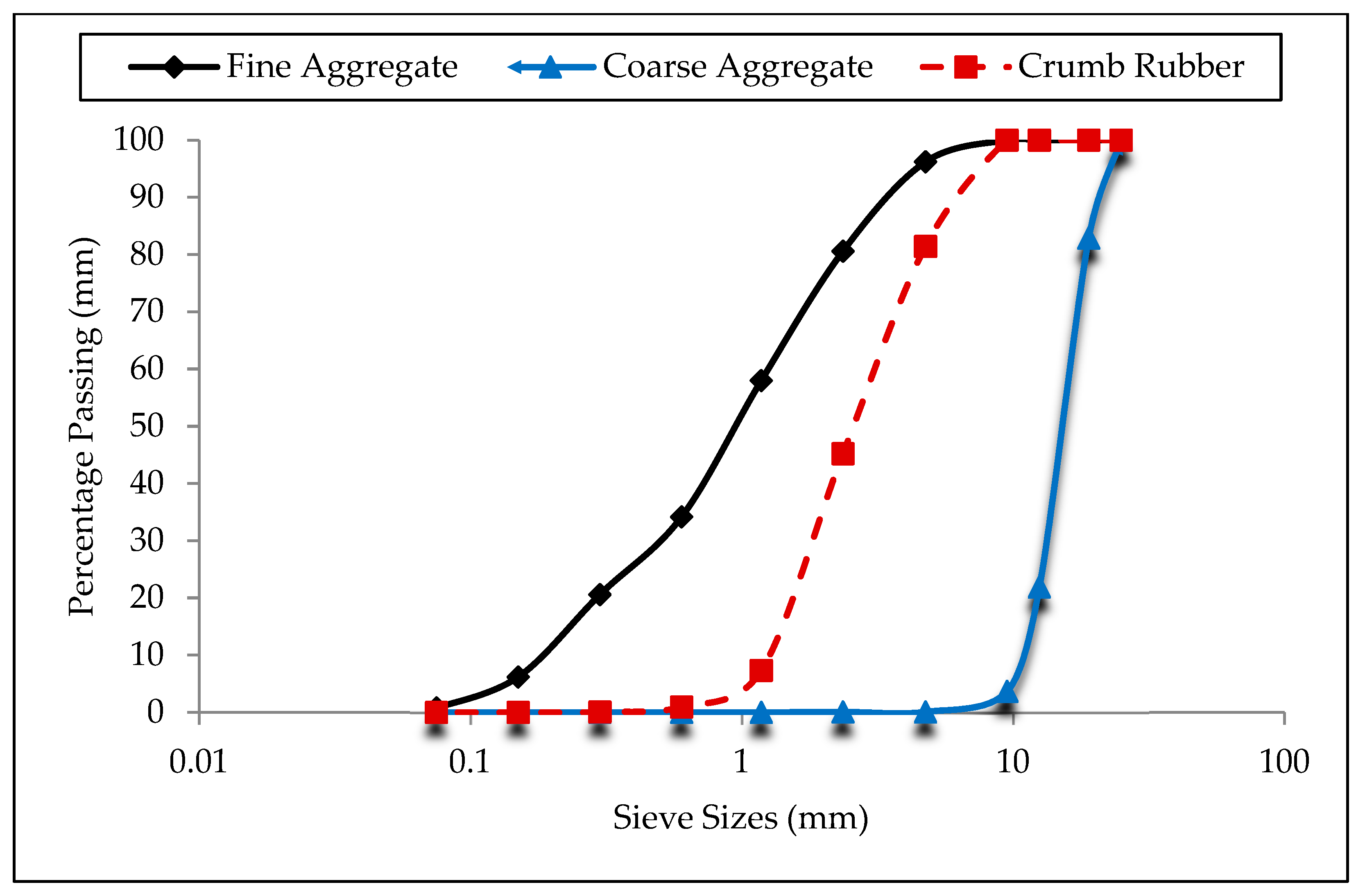
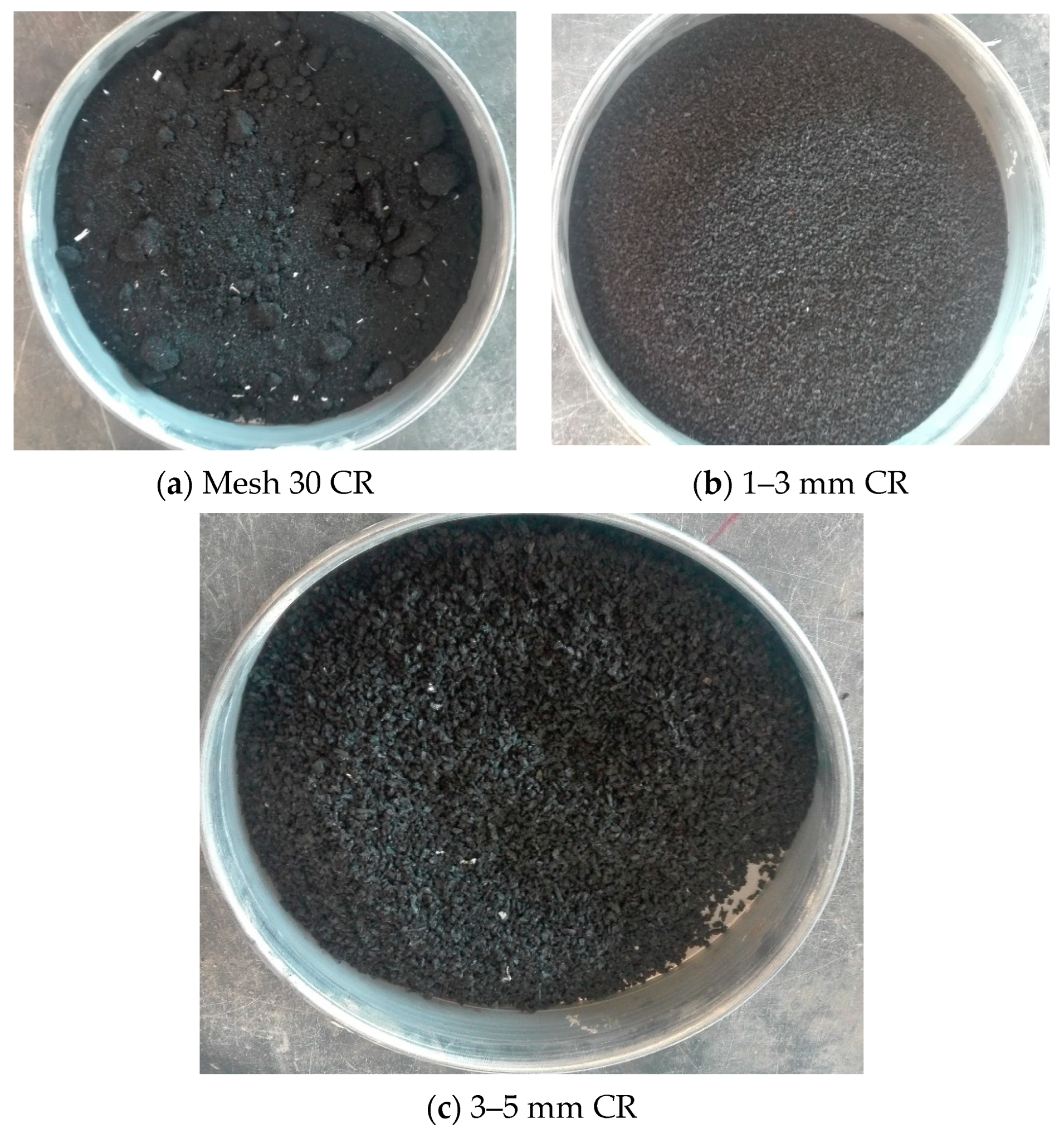
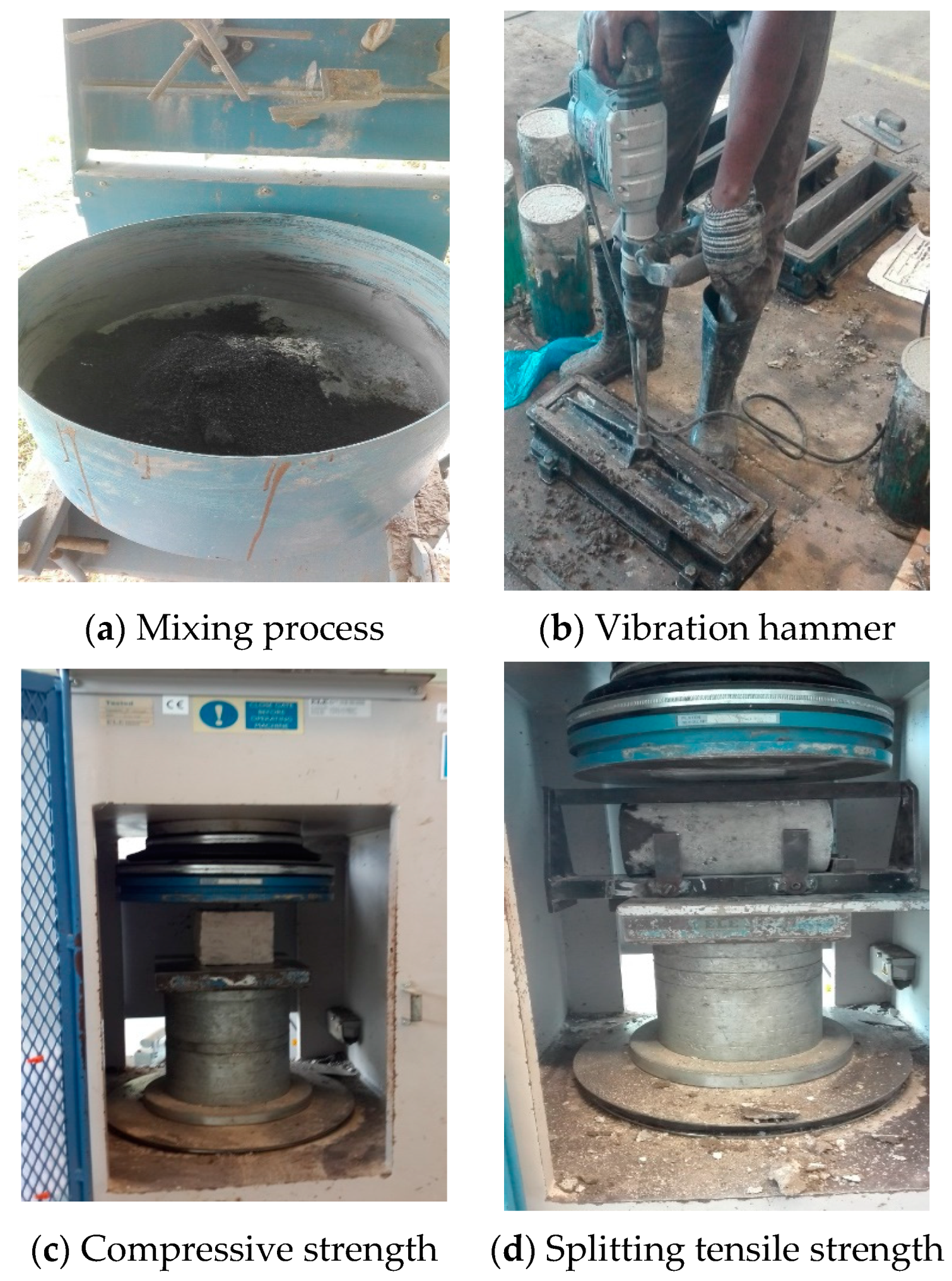
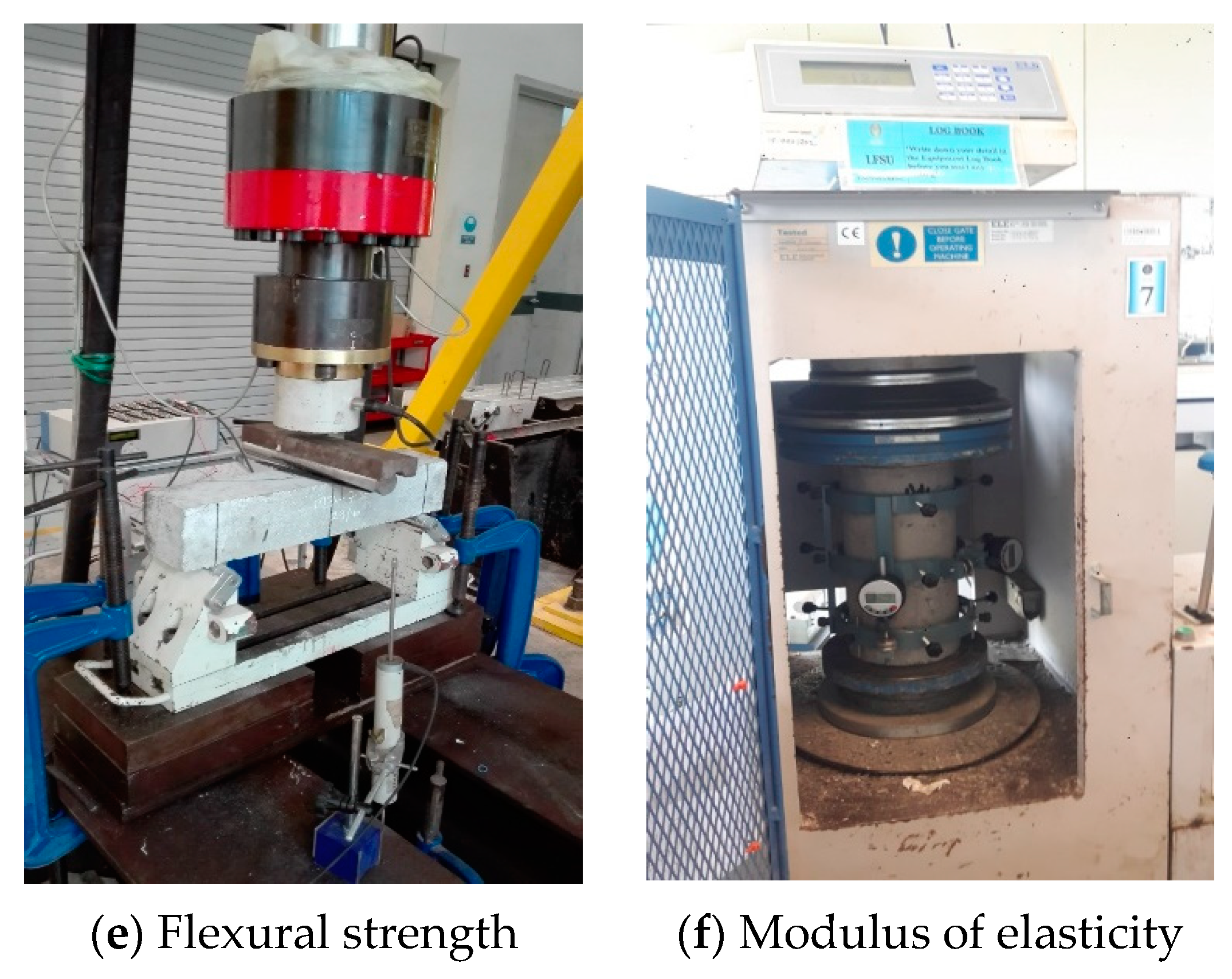
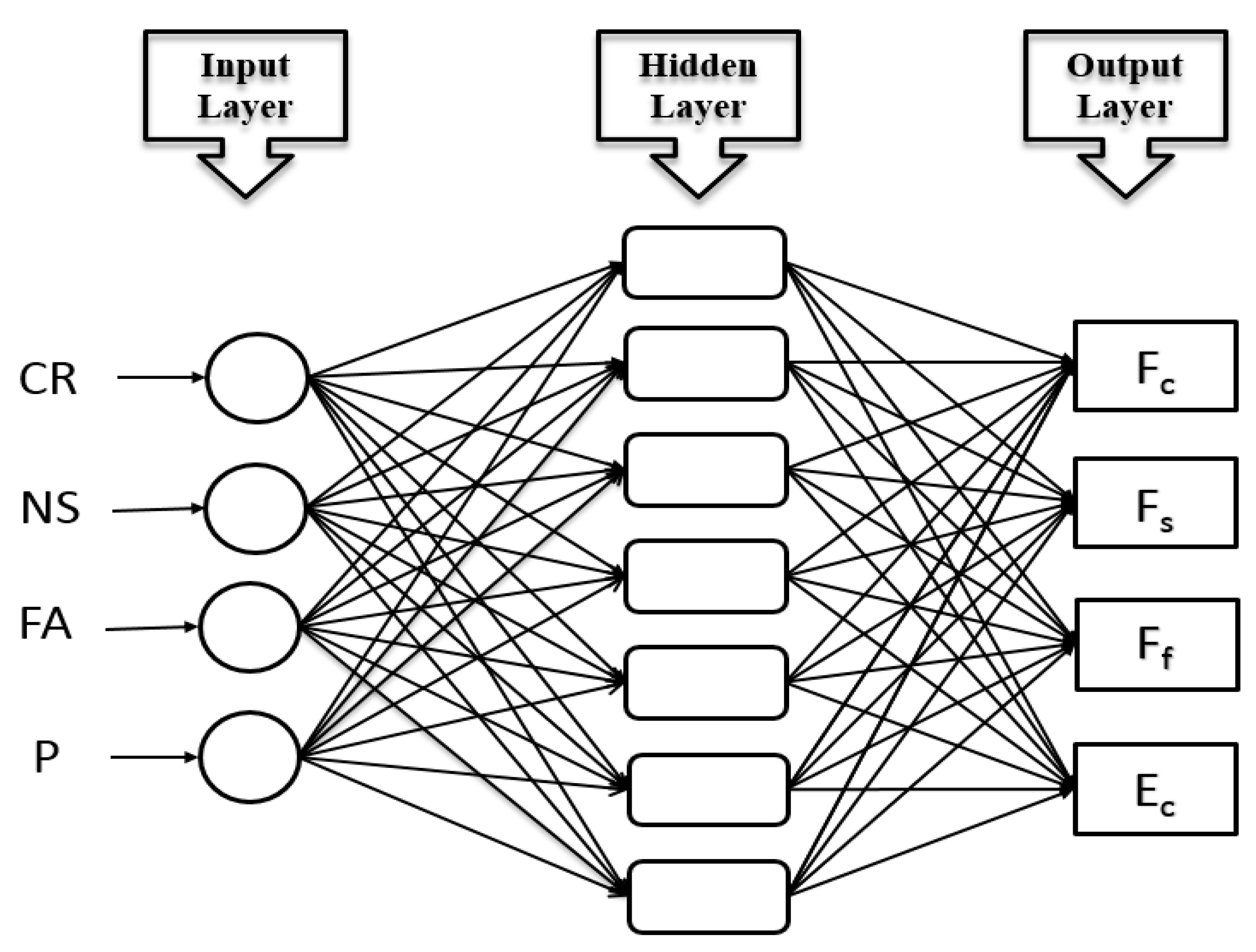

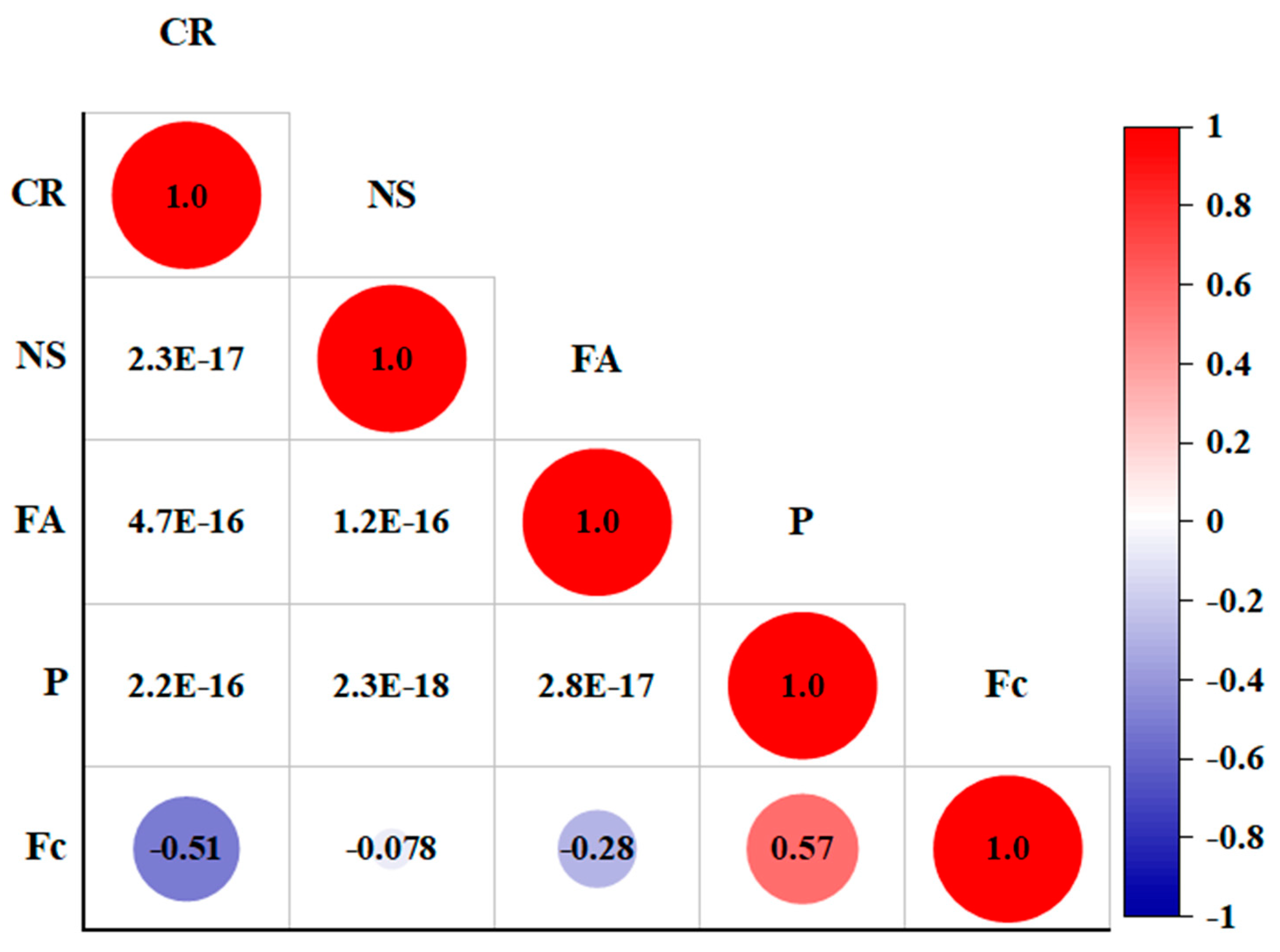
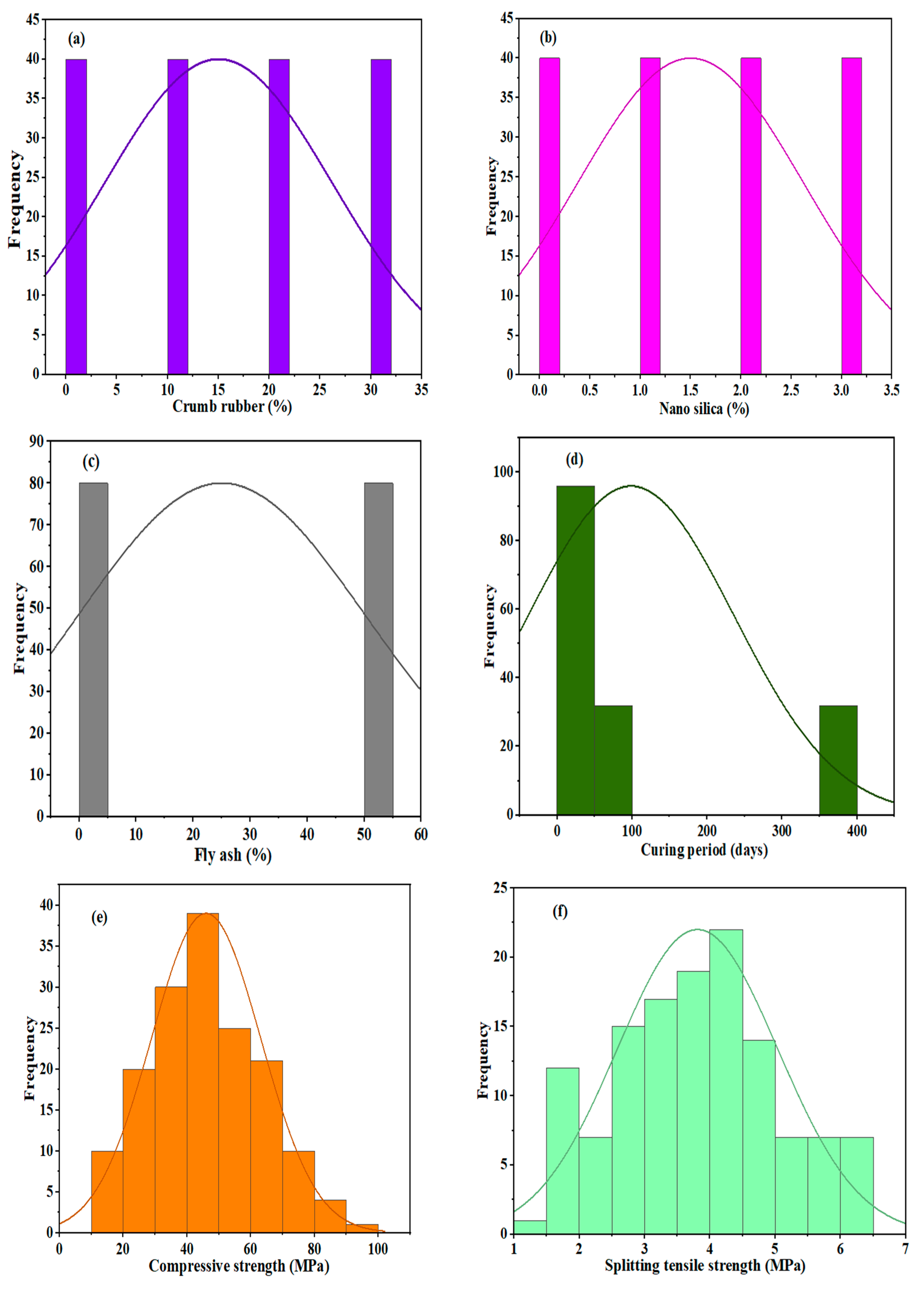

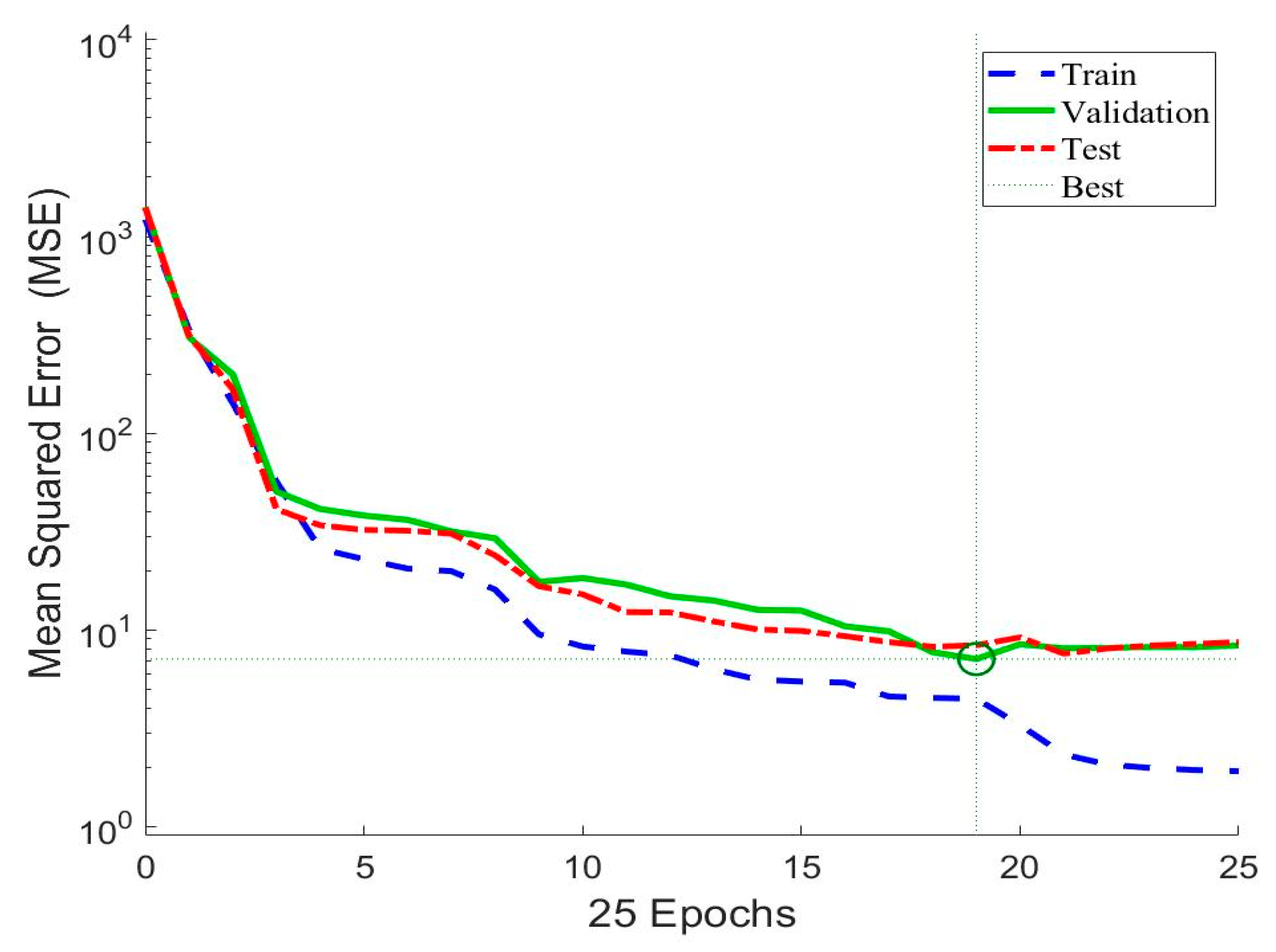
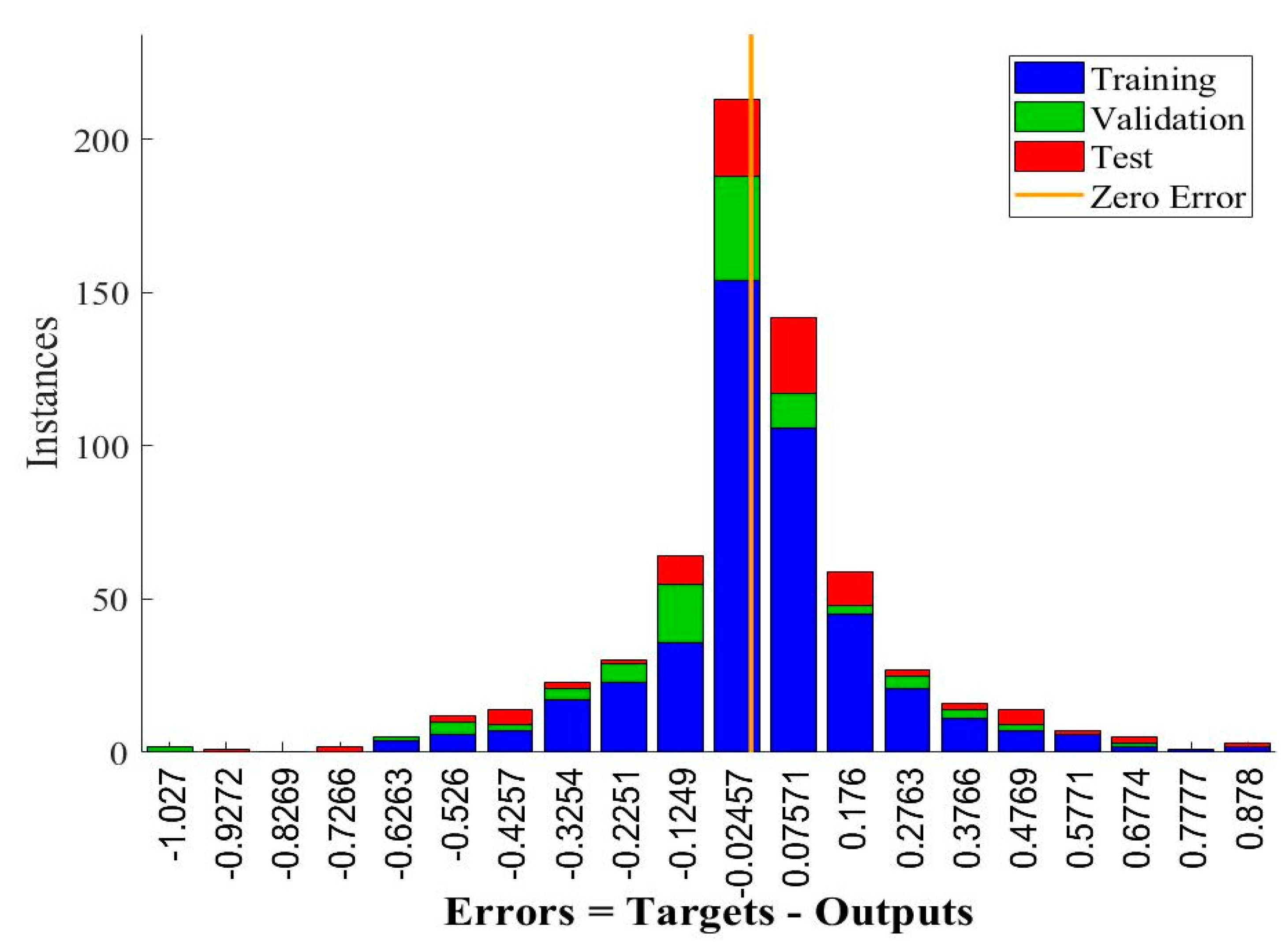
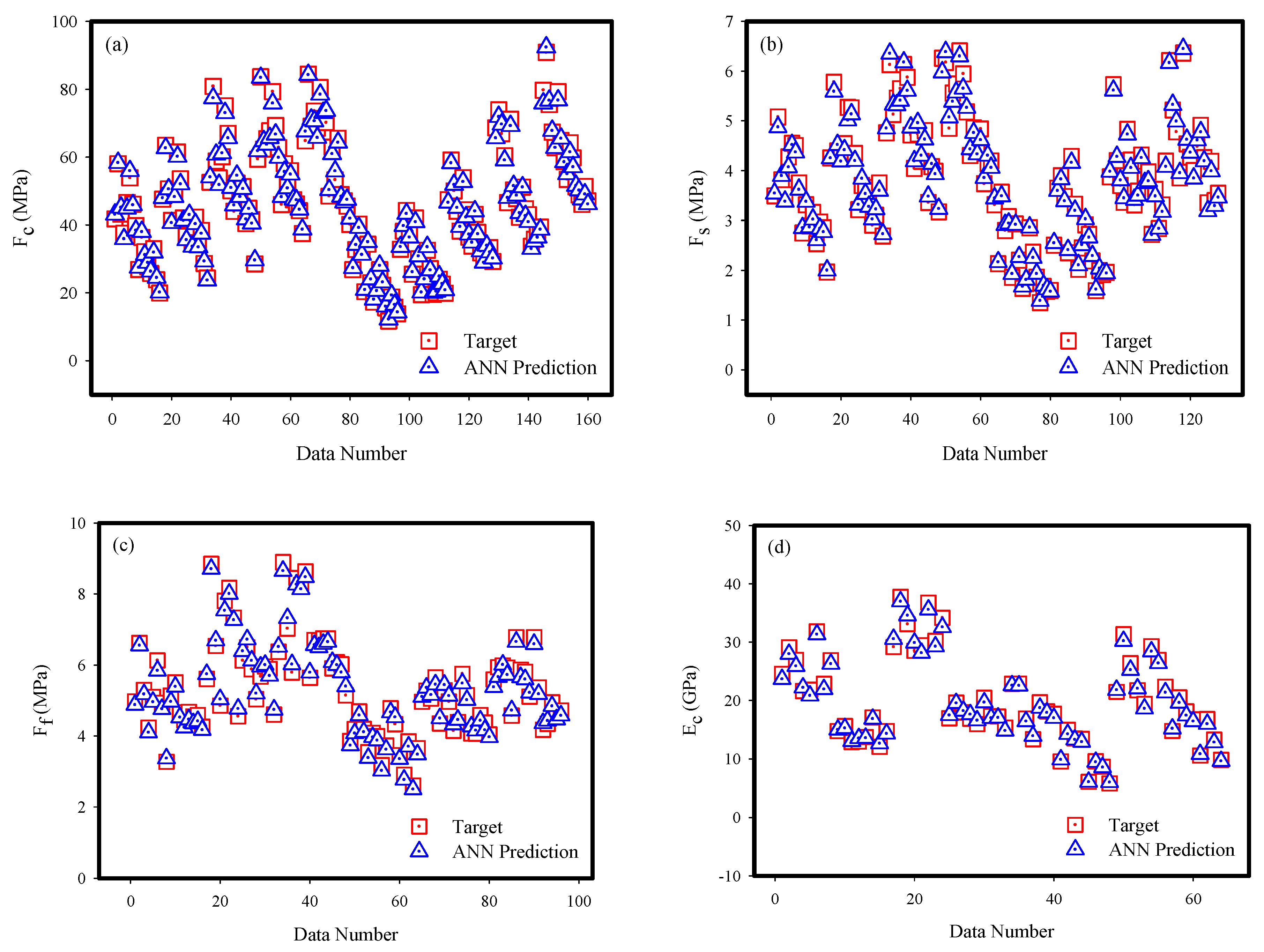
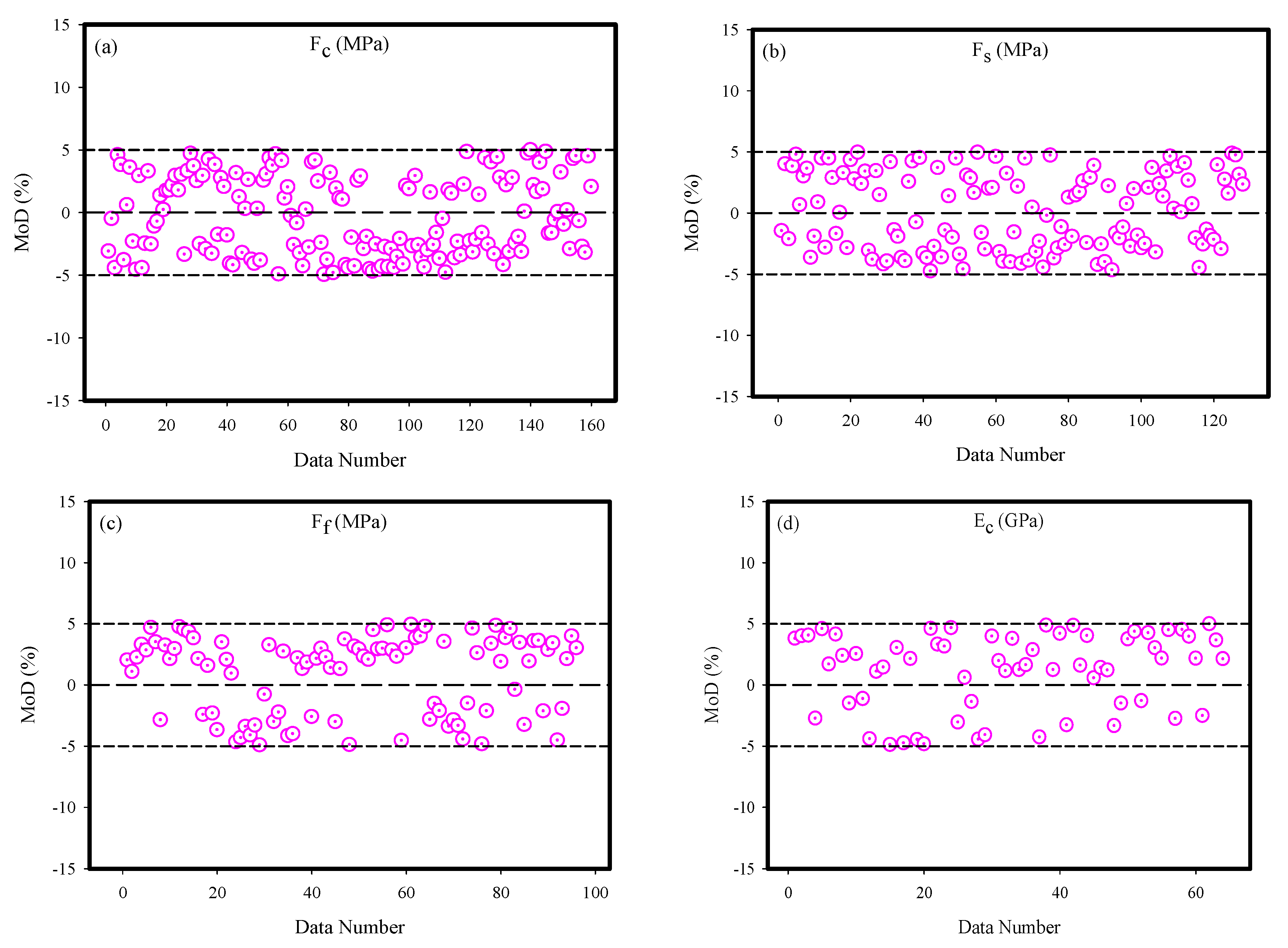


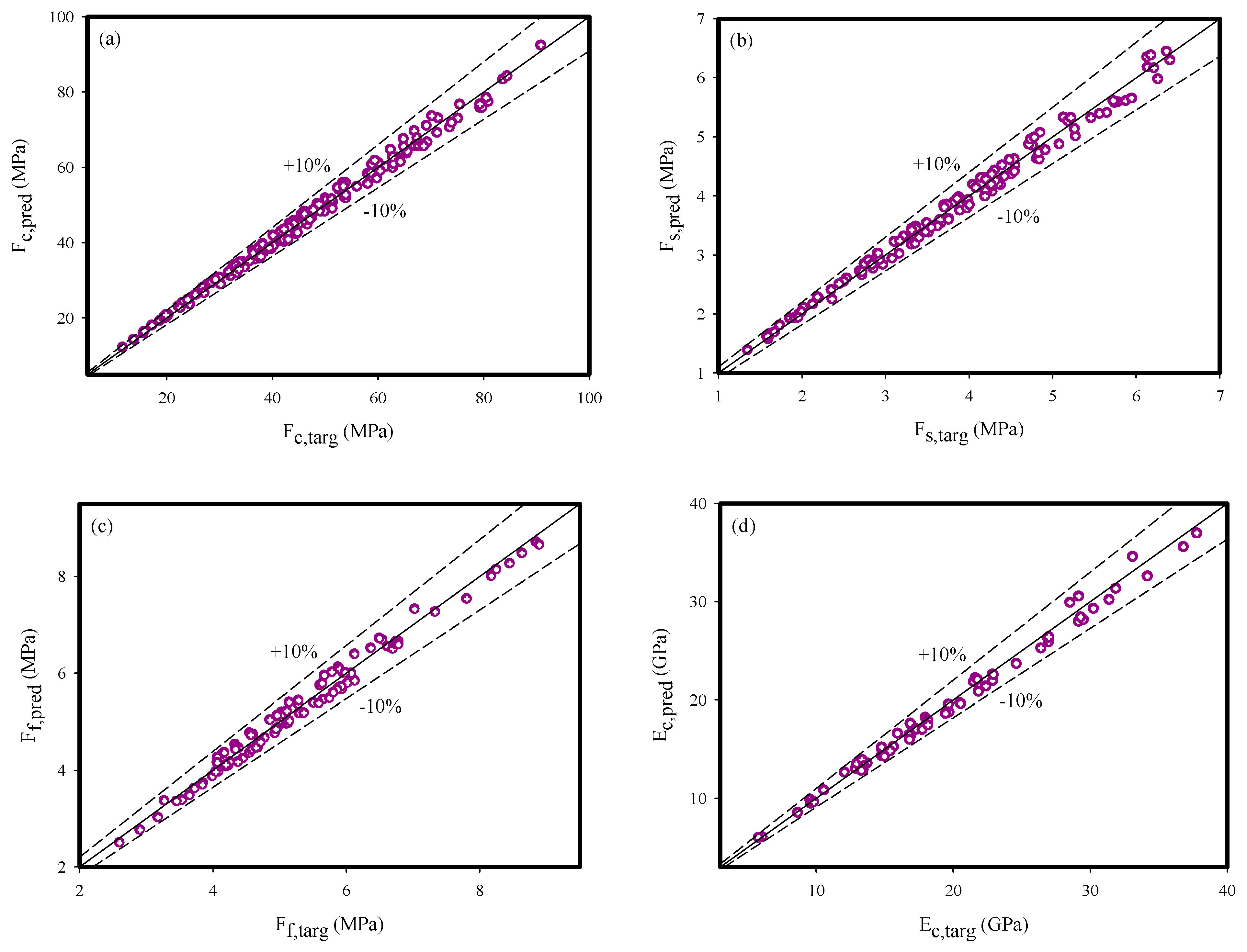
| Composition of Oxides | Quantity by Mass (%) | |
|---|---|---|
| Cements | Fly Ash | |
| SiO2 (%) | 20.76 | 57.06 |
| CaO (%) | 61.4 | 9.79 |
| Al2O3 (%) | 5.54 | 20.96 |
| Fe2O3 | 3.35 | 4.15 |
| MgO (%) | 2.48 | 0.033 |
| Na2O (%) | 0.19 | 2.23 |
| K2O (%) | 0.78 | 1.53 |
| TiO2 (%) | - | 0.68 |
| SO3 (%) | 1.49 | - |
| Loss of ignition (%) | 2.2 | 1.25 |
| Specific gravity | 3.15 | 2.4 |
| Blaine fineness (m2/kg) | 325 | 290 |
| Items | Qualities |
|---|---|
| Average particle size (nm) | 10–25 |
| Hydrophobicity | Strong |
| SiO2 (dry base) (%) | ≥92 |
| SiO2 (%) (950 °C 2 h) | ≥99.8 |
| Specific surface area (m2/g) | 100 ± 25 |
| PH value | 6.5–7.5 |
| Surface density (g/mL) | ≤0.15 |
| Hear reduction (%) (105 °C 2 h) | ≤3 |
| Loss of ignition (%) (950 °C 2 h) | ≤6 |
| Dispensability (%) (%) (CCl4) | ≥80 |
| Oil-absorbed value (mL/100 g) | ≥250 |
| Hydrophobicity | Strong |
| Chemical | C | O | Si | Zn | S | Mg | Al |
|---|---|---|---|---|---|---|---|
| Composition by Mass (%) | 87.5 | 9.24 | 0.2 | 1.77 | 1.07 | 0.14 | 0.08 |
| Mixes | Variables (%) | Materials Constituent (kg/m3) | |||||||||
|---|---|---|---|---|---|---|---|---|---|---|---|
| Fly Ash | CR | NS | Cement | Fly ash | NS | Fine Aggregate | CR | Coarse Aggregate | Water | SP | |
| Control | 0 | 0 | 0 | 268.69 | 0 | 0 | 1148.05 | 0 | 831.88 | 98.24 | 2.69 |
| 1 | 50 | 0 | 0 | 134.58 | 102.54 | 0 | 1150.08 | 0 | 831.88 | 96.87 | 2.37 |
| 2 | 50 | 0 | 1 | 134.58 | 102.54 | 2.37 | 1150.08 | 0 | 831.88 | 96.87 | 2.39 |
| 3 | 50 | 0 | 2 | 134.58 | 102.54 | 4.74 | 1150.08 | 0 | 831.88 | 96.87 | 2.42 |
| 4 | 50 | 0 | 3 | 134.58 | 102.54 | 7.11 | 1150.08 | 0 | 831.88 | 96.87 | 2.44 |
| 5 | 50 | 10 | 0 | 134.58 | 102.54 | 0 | 1035.07 | 115.08 | 831.88 | 96.87 | 2.37 |
| 6 | 50 | 10 | 1 | 134.58 | 102.54 | 2.37 | 1035.07 | 115.08 | 831.88 | 96.87 | 2.39 |
| 7 | 50 | 10 | 2 | 134.58 | 102.54 | 4.74 | 1035.07 | 115.08 | 831.88 | 96.87 | 2.42 |
| 8 | 50 | 10 | 3 | 134.58 | 102.54 | 7.11 | 1035.07 | 115.08 | 831.88 | 96.87 | 2.44 |
| 9 | 50 | 20 | 0 | 134.58 | 102.54 | 0 | 920.06 | 230.17 | 831.88 | 96.87 | 2.37 |
| 10 | 50 | 20 | 1 | 134.58 | 102.54 | 2.37 | 920.06 | 230.17 | 831.88 | 96.87 | 2.39 |
| 11 | 50 | 20 | 2 | 134.58 | 102.54 | 4.74 | 920.06 | 230.17 | 831.88 | 96.87 | 2.42 |
| 12 | 50 | 20 | 3 | 134.58 | 102.54 | 7.11 | 920.06 | 230.17 | 831.88 | 96.87 | 2.44 |
| 13 | 50 | 30 | 0 | 134.58 | 102.54 | 0 | 805.05 | 345.27 | 831.88 | 96.87 | 2.37 |
| 14 | 50 | 30 | 1 | 134.58 | 102.54 | 2.37 | 805.05 | 345.27 | 831.88 | 96.87 | 2.39 |
| 15 | 50 | 30 | 2 | 134.58 | 102.54 | 4.74 | 805.05 | 345.27 | 831.88 | 96.87 | 2.42 |
| 16 | 50 | 30 | 3 | 134.58 | 102.54 | 7.11 | 805.05 | 345.27 | 831.88 | 96.87 | 2.44 |
| Direction | Parameter | Symbols | Unit | Min | Max | Mean | SD | Kurtosis | Skewness |
|---|---|---|---|---|---|---|---|---|---|
| Inputs | Crumb rubber | CR | % | 0 | 30 | 15.00 | 11.215 | −1.365 | 0.00 |
| Nano silica | NS | % | 0 | 3 | 1.50 | 1.121 | −1.365 | 0.00 | |
| Fly ash | FA | % | 0 | 50 | 25.00 | 25.078 | −2.025 | 0.00 | |
| Curing time | P | days | 3 | 365 | 98.60 | 137.22 | 0.017 | 1.32 | |
| Output | Compressive strength | Fc | MPa | 11.68 | 90.86 | 45.98 | 17.22 | −0.499 | 0.27 |
| Splitting tensile | Fs | MPa | 1.35 | 6.41 | 3.81 | 1.23 | −0.559 | 0.096 | |
| Flexural strength | Ff | MPa | 2.60 | 8.89 | 5.32 | 1.32 | 0.482 | 0.707 | |
| Modulus of elasticity | Ec | GPa | 5.79 | 37.78 | 19.85 | 7.53 | −0.393 | 0.440 |
Disclaimer/Publisher’s Note: The statements, opinions and data contained in all publications are solely those of the individual author(s) and contributor(s) and not of MDPI and/or the editor(s). MDPI and/or the editor(s) disclaim responsibility for any injury to people or property resulting from any ideas, methods, instructions or products referred to in the content. |
© 2023 by the authors. Licensee MDPI, Basel, Switzerland. This article is an open access article distributed under the terms and conditions of the Creative Commons Attribution (CC BY) license (https://creativecommons.org/licenses/by/4.0/).
Share and Cite
Adamu, M.; Çolak, A.B.; Ibrahim, Y.E.; Haruna, S.I.; Hamza, M.F. Prediction of Mechanical Properties of Rubberized Concrete Incorporating Fly Ash and Nano Silica by Artificial Neural Network Technique. Axioms 2023, 12, 81. https://doi.org/10.3390/axioms12010081
Adamu M, Çolak AB, Ibrahim YE, Haruna SI, Hamza MF. Prediction of Mechanical Properties of Rubberized Concrete Incorporating Fly Ash and Nano Silica by Artificial Neural Network Technique. Axioms. 2023; 12(1):81. https://doi.org/10.3390/axioms12010081
Chicago/Turabian StyleAdamu, Musa, Andaç Batur Çolak, Yasser E. Ibrahim, Sadi I. Haruna, and Mukhtar Fatihu Hamza. 2023. "Prediction of Mechanical Properties of Rubberized Concrete Incorporating Fly Ash and Nano Silica by Artificial Neural Network Technique" Axioms 12, no. 1: 81. https://doi.org/10.3390/axioms12010081
APA StyleAdamu, M., Çolak, A. B., Ibrahim, Y. E., Haruna, S. I., & Hamza, M. F. (2023). Prediction of Mechanical Properties of Rubberized Concrete Incorporating Fly Ash and Nano Silica by Artificial Neural Network Technique. Axioms, 12(1), 81. https://doi.org/10.3390/axioms12010081










